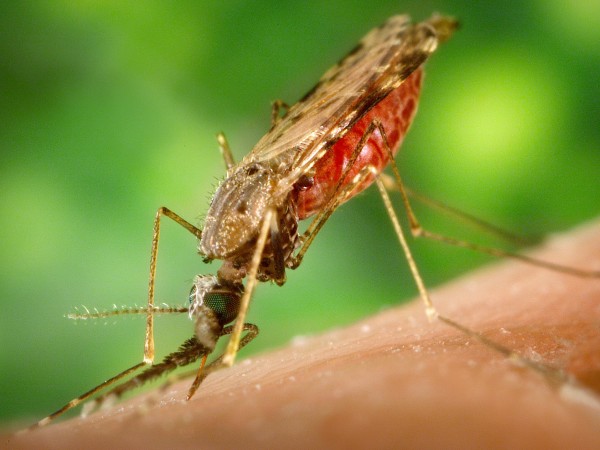On 28 December 2014, Valentino Gantz and Ethan Bier checked on the fruit flies that had just hatched in their lab at the University of California (UC), San Diego. By the classic rules of Mendelian genetics, only one out of four of the newborn flies should have shown the effects of the mutation their mothers carried, an X-linked recessive trait that causes a loss of pigmentation similar to albinism. Instead, nothing but pale yellow flies kept emerging. “We were stunned,” says Bier, who is Gantz’s Ph.D. adviser. “It was like the sun rose in the west rather than the east.” They hammered out a paper and submitted it to Science 3 days later.
In the study, published online this week, Gantz and Bier report that the introduced mutation disabled both normal copies of a pigmentation gene on the fruit fly chromosomes, transmitting itself to the next generation with 97% efficiency—a near-complete invasion of the genome. The secret of its success: an increasingly popular gene-editing toolkit called CRISPR, which Gantz and Bier adapted to give the mutation an overwhelming advantage. The technique is the latest—and some say, most impressive—example of gene drive: biasing inheritance to spread a gene rapidly through a population, or even an entire species. At this level of efficiency, a single mosquito equipped with a parasite-blocking gene could in theory spread malaria resistance through an entire breeding population in a single season (see diagram).
G. GRULLÓN/SCIENCE
The paper comes amid intense soul-searching among gene drive researchers, with calls for public dialogue and self- policing for the technology. George Church, a geneticist at Harvard Medical School in Boston who is a leader in the field, believes the new study should not have been published, because it does not include measures to restrain the spread of unintended mutations. “It is a step too far,” he says.
Creating a gene drive system wasn’t Gantz’s original goal, Bier says. “We were just trying to solve a practical problem.” Gantz studies the development of fruit fly wing veins, for which he must create flies with multiple mutations. That’s typically painstaking work, requiring large numbers of flies over many generations to create a single multimutant. Last summer, Gantz made a tweak to the CRISPR system, in which an engineered bacterial protein, Cas9, uses a string of RNA to find and delete, replace, or otherwise edit a target DNA sequence. By equipping the CRISPR gene cassette with DNA sequences flanking the targeted gene, Gantz hoped to create a mutation that would “auto-catalyze.” Once incorporated on one chromosome, it would produce new copies of the CRISPR complex that would target and edit the gene everywhere it appeared.
Bier realized that Gantz’s self-replicating gene cassette could cause gene drive. After discussions with UC San Diego, the university gave the experiment the green light if certain biosafety measures were taken: The flies are kept in three layers of tubes and boxes, and the lab is locked behind five doors with fingerprint security.
Gantz and Bier knew they had achieved the first goal, making double mutants in one step, on 18 December last year, when yellow female flies developed from embryos injected with a CRISPR cassette targeting the X chromosome pigmentation gene. But they wanted to know whether the engineered gene could make it through the germ cells and invade the next generation. The yellow flies they saw on 28 December confirmed that it did, and with 97% efficiency.
The technique is “fantastic,” says geneticist Anthony James of UC Irvine, whose lab made the first transgenic mosquitoes nearly 2 decades ago with a far more laborious technique. Bier and James are already collaborating to create a mosquito equipped with genes designed to block the transmission of malaria and dengue fever—and to quickly spread through a population. “We’re hoping for results by the end of the year,” James says.
It’s not the only horse in the gene drive race. Church’s group also has a CRISPR approach that works at near-perfect efficiency in yeast. It includes built-in precautions designed to prevent the system from running amok. For example, Church avoids incorporating Cas9’s gene and the targeting RNA sequence into a single cassette, so that unintended genes can’t become accidentally incorporated and spread. Because Gantz and Bier’s method does not have such safeguards, “it encourages a standard of behavior that is much lower than what we’re recommending,” Church says. “What will spread is not literally their mutant flies, but their protocol.”
Bier rejects the criticism. “The safeguards that [Church] is using in yeast just can’t work in flies,” he notes. “I bristle when people say that we haven’t thought carefully about this,” adds James, who last year co-authored a World Health Organization report on precautions for use of transgenic mosquitos. “And how could we not publish this work? Nothing is served by hiding things. The whole point is to show that it is possible and have a public discussion.”
Source: AAAS, Full Article



